Related Research Articles
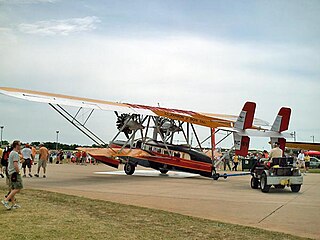
The Sikorsky S-38 was an American twin-engined ten-seat sesquiplane amphibious aircraft. It was Sikorsky's first widely produced amphibious flying boat, serving successfully for Pan American Airways and the United States military.

The Keystone–Loening K-84 Commuter was a single-engine closed-cabin 4-place biplane amphibious flying boat built by Keystone–Loening. It was powered by a 300 hp Wright Whirlwind engine mounted between the wings with the propeller just ahead of the windscreen. It was first produced in 1929.

The Grumman FF "Fifi" was an American biplane fighter aircraft operated by the United States Navy during the 1930s. It was the first carrier aircraft with retractable landing gear. It was produced under licence in Canada and known as the Goblin in Canadian service and Delfín in Spanish service.
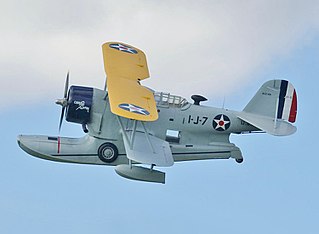
The Grumman J2F Duck is an American single-engine amphibious biplane. It was used by each major branch of the U.S. armed forces from the mid-1930s until just after World War II, primarily for utility and air-sea rescue duties. It was also used by the Argentine Navy, who took delivery of their first example in 1937. After the war, J2F Ducks saw service with independent civilian operators, as well as the armed forces of Colombia and Mexico.
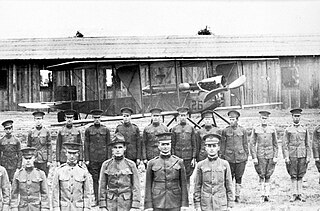
The Burgess Model H was an early United States airplane and one of the first air machines specifically designed and built for military use.

The Wright Model C "Speed Scout" was an early military aircraft produced in the United States and which first flew in 1912. It was a development of the Model B but was specifically designed to offer the Aeronautical Division, U.S. Signal Corps a long-range scouting aircraft.

The Caudron C.280 Phalène ("Moth") was a civil utility aircraft built in France during the 1930s. It was a high-wing braced monoplane of conventional configuration with fixed tailskid undercarriage. The pilot and two-three passengers were accommodated within an enclosed cabin. The structure was wooden throughout, with the forward fuselage skinned with plywood, and the rest of the aircraft fabric-covered.

The Loening OL, also known as the Loening Amphibian, was an American two-seat amphibious biplane designed by Grover Loening and built by Loening for the United States Army Air Corps and the United States Navy.
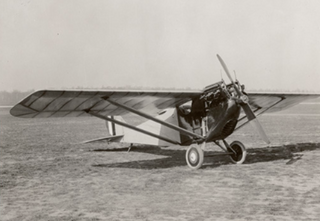
The Loening M-8 was a 1910s American fighter monoplane designed by Grover Loening and built by his Loening Aeronautical Engineering Company. The order for 5000 for the United States Army Air Corps was canceled when the First World War ended.
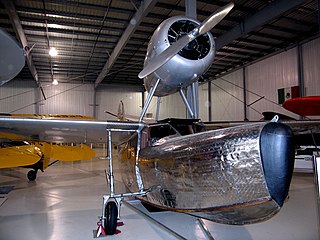
The Fleetwings Sea Bird was an American-built amphibious aircraft of the 1930s.

The Loening PW-2 was a 1920s American single-seat monoplane fighter designed by Grover Loening and built by his Loening Aeronautical Engineering Company.
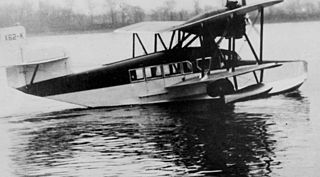
The Loening C-4C, later the Keystone-Loening K-85 Air Yacht following the merger of the Loening and Keystone companies, was an amphibious utility biplane built in the United States in the late 1920s. It was developed by Grover Loening from the C-1 that he had created together with Leroy Grumman, incorporating a new fuselage design. This departed from the characteristic Loening design feature of having a slender, "shoehorn" float projecting from the underside of the fuselage with an engine mounted tractor-fashion above it. Instead, the C-4C had a conventional flying-boat hull, with an enclosed cabin for passengers. The engine was mounted in a separate nacelle on the leading edge of the upper wing.

The Loening C-2 Air Yacht was an amphibious airliner produced in the United States at the end of the 1920s, developed from the OL observation aircraft the firm was producing for the US military.

The Loening S-1 Flying Yacht, also called the Loening Model 23, was an early light monoplane flying boat designed in the United States by Grover Loening in the early 1920s. The aircraft won the 1921 Collier Trophy.

The Loening XSL was an American submarine-based reconnaissance flying boat designed and built by Grover Loening Aircraft Company for the United States Navy.
The Caudron C.220 was a two-seat French biplane trainer. Only two were built, using different engines.
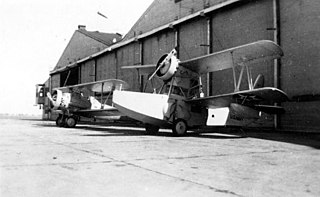
The Loening XS2L was an American biplane scout amphibian developed by Keystone-Loening, for the United States Navy during the early 1930s.

The Loening C-1 Air Yacht was an amphibious airliner produced in the United States at the end of the 1920s.

The Loening M-2 Kitten was a light aircraft produced in the United States at the end of the 1920s, for use aboard capital ships and submarines of the United States Navy (USN).

The Loening R-4 was a racer aircraft built by Loening in the early 1920s.
References
- ↑ "Loening C-5" (in Russian). Airwar.ru. Retrieved 2019-02-26.